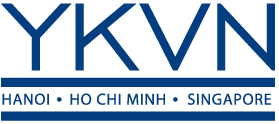 Published in Asian-mena Counsel: Projects & Energy Special Report 2019
Published in Asian-mena Counsel: Projects & Energy Special Report 2019
By Eli Mazur, Nguyen Van Hai and Ho Van Khanh, YKVN
Companies that seize the green opportunity in this emerging market will gain significant advantages in the long term.
 INTRODUCTION
INTRODUCTION
The most recent data for the fourth quarter has confirmed that Vietnam’s economy was the world’s fastest-growing in 2018, recording gross domestic product growth of 7.1 percent for the full year. In December 2017, international, bilateral and regional financial institutions, both public and private, raved about Vietnam on CNN and MSNBC and proclaimed that growth levels of 6 percent were sure to continue into 2018. Meanwhile, the world economy slumped, particularly international stocks in Western Europe and East Asia — and the only highlight from the world’s wealthy countries was the American economy.
Vietnamese economic development and a shortage of power
However, Vietnam does find itself in a troubling situation — namely, to sustain its growth, Vietnam requires more and more energy. Although this is a problem that hundreds of other countries would love to be facing this new year, this is a Vietnamese problem and the solutions are unique to Vietnam’s political economy.
Samsung, Intel, BMW and Apple all are either considering increasing or making initial investments in Vietnam, which has had the effect of launching Vietnam — in less than 15 years, according to the World Bank — from one of the world’s “least developed countries” to one of the world’s 50 “middle-income countries”. With, among other things, half-a-million high value-added jobs directly created by the initial investments of Samsung and Intel, the Vietnamese Government is wondering, whether electric, gas, solar, wind or, indeed, the will power will be found to allow commercially viable alternatives to the Government’s monopolistic approach to the supply, purchase and distribution of energy.
The stakes are high for Vietnam’s future development, particularly when the measurement criterion is the Human Development Index. If Vietnam can create a viable commercial alternative, then, perhaps, foreign investors will no longer require Government Guarantees and assorted strange Financial Documents that have become required reading — and signing — for syndicates of international banks to reach Financial Close of the most important power generation projects in Vietnam. Indeed, for a decade after the Phu My Projects in the late 1990s and early 2000s, more than 10 projects failed — until the Government finally agreed in Mong Duong 2 in 2011 to sign a set of “bankable” Financial Documents, thus allowing Financial Close and sufficient power for Samsung to create 60,000 jobs in Northern Vietnam, as reported in The Economist.

Vietnam’s demand for energy has risen by an average of 9.5 percent year-on-year for the past 15 years. Over the last 25 years, Vietnam’s power demand has seen expediential growth as the economic structure of the nation has continued to shift towards a higher proportion of industry-construction and services (and away from agriculture), which makes up 34.28 percent and 41.17 percent of GDP, respectively. To sustain its current growth, Vietnam is committed to importing energy and developing new sources of power. However, funding is proving to be an issue. Given that Vietnam is currently shifting away from agriculture and toward industrialisation, the country needs enough energy to power its changing economic structure.
Currently, most energy is produced in the North, and it is then transferred to the Centre and South through 500kV transmission systems, resulting in significant energy losses by the time it reaches the South. For this reason, the Government’s current plan for energy production largely relies on coal. However, in the future, Vietnam has already created an initial legal framework to switch from “dirty” energy to alternative energy sources, and this legal framework comes with a strong financial incentive structure.
According to the World Bank, Vietnam will be one of the world’s three worst-affected countries by climate change. Indeed, this can already be seen, measured and understood by the salinisation of the Mekong River Delta. Thus, climate change may not wait for Vietnam to be ready to embrace new solutions.
Within the context of Vietnam’s rural-to-urban migration, the country has grand plans for a transportation, sanitation and climate change inspired infrastructure — the dream is to upgrade 1,000 kilometres of underground and above-ground subways and high-speed metros, which currently line the city’s sky and underbelly like the skeleton of a neglected fish. But Vietnam is hungry and its next meal may, indeed, have to be the remaining meat on these bones. However, Vietnam needs the financial assistance of international banks and project sponsors.
This article presents a short summary of the strengths, weaknesses, opportunities and threats in Vietnam’s conventional (dirty) and clean energy sectors. Our firm has been involved, whether acting for sponsors or lenders or advising the Vietnamese Government, in every project to have reached financial close since 1975.
GENERAL BACKGROUND INFORMATION
Conventional dirty energy
The country’s energy mix is based today mainly on hydroelectric dams and coal-fired power plants (37.6 percent and 34.3 percent of the energy mix, respectively), followed by gas-fired power plants (17.8 percent), renewable energy (5.5 percent), oil-fired power plants (3.3 percent) and imports from Laos and China (1.2 percent), according to the EVN Activity Report 2017.
According to a report by the Ministry of Industry and Trade (MOIT), coal is still the primary source of energy in Vietnam’s power generation and its privileged position is ensured because of its special status as giving “security” to the energy supplies of Vietnam. By 2020, the Vietnamese government expects its production of coal-fired energy to reach 49.3 percent of national electricity production, and 53.2 percent by 2030.
Vietnam’s impressive economic growth is at risk, not to mention its air quality. The supply of coal and gas power plants is made problematic due to the depletion of domestic fossil resources, which has created a need to import energy and, therefore, diminish Vietnam’s control and sovereignty, as such things relate to energy. As a result, Vietnam’s coal imports reached more than 10 million tons in 2016 and continue to increase. The trends in the importation of coal and oil (crude oil and oil products) reveal that Vietnam is becoming a country dependent on imports, with net imports of 5 percent in 2015, according to the Energy Outlook Report 2017. Although Vietnam’s level of imports is low when compared to other Asian countries, the current level represents a marked increase after a long history as a net coal exporter to the world.
The situation is dire in a number of ways. For instance, in November 2018, a coal shortage in the northern part of the country resulted in the shutdown of plants for several days, as reported in the Hanoi Times. Furthermore, as a result of this shift to fossil energy in the past decade, Vietnam has had the highest greenhouse gas emissions (GHG) emissions in the Asean region. The total GHG emissions and GHG emissions per capita have increased nearly three times in a 10-year period, while the carbon intensity per GDP increased by 48 percent, according to Dara’s Climate Vulnerability Monitor.

Green energy recent developments
However, the news is not all bad. Indeed, the most encouraging sign in Vietnam for the potential development of wind power and solar power is the statutory tariff in both areas: Vietnam Electricity (EVN) must pay 8.5 cents (USD) per kilowatt-hour (kWh) for inland wind power projects, and 9.8 cents per kWh for offshore wind power projects, as well as 9.35 cents per kWh for solar power projects. Thus, the Vietnamese Government proved that it listens to investors and is trying to ensure that their investment in Vietnam into these projects will benefit both Vietnam and the investment community. These policies have resulted in measurable success. Indeed, in the past year, more than 120 solar power projects have been added to the existing master plan, as reported by the MOIT in September 2018, and the room for new projects is still available.
SWOT ANALYSIS OF THE REGULATORY FRAMEWORK
The regulatory framework for the green energy industry is, however, quite primitive at the moment. One example is that there is no master plan for solar energy development issued, and therefore, green energy projects are still categorised under the same conventional power projects in the outdated national master plan. The administration of investment procedures is merely an adaptation of the traditional framework for thermal projects, which is complicated, vague and full of risks. Notwithstanding these issues, it is time for Vietnam’s new energy sector and regulations to be subject to an updated SWOT analysis.
Strengths
1. Feed-in tariff (FiT): For grid-connected solar power projects, 9.35 cents per kWh, which is considered attractive to foreign investors. Similar to wind power projects, 8.5 cents per kWh for inland wind power projects, and 9.8 cents per kWh for offshore wind power projects. Such FiTs are subject to adjustment depending on the exchange rate. Note that such prices apply only for projects whose commercial operation started before June 30, 2019 for solar power and November 1, 2019 for wind power projects. However, we are optimistic that any new FiT would be in favour of investors since Vietnam is still in need of funding for green energy.
2. Principle Approval: As mentioned above, the competent authority has been approving a considerable amount of new wind power and solar power projects in the past year. Such principal approvals can be considered one of the biggest challenges of a power project. Also, the regulatory approval process is simplified. One example is that investment registration certificates are no longer required for wind power projects.
Weaknesses
1. Power Purchase Agreement (PPA): There is a template PPA for grid-connected solar power projects with a maximum term of 20 years. There is also a template PPA for wind power projects, which is very similar to the solar PPA template and will take effect from Feb 28, 2019. Such templates are quite simple and seem to be more suitable for state-owned small solar power projects. However, large-scale international projects would need to improve such templates to be closer to international practice. The provided template of the PPA is considered non-bankable for the majority of lenders for multiple reasons. Although in practice, the PPAs for conventional power projects are negotiable, the current template of the green PPAs is still a cause of concern among lenders. For instance, because of the monopoly position of EVN — as the one and only purchaser of electricity in the market — payment risks are significant. Such risks can be minimised partly by a Governmental Guarantee and Undertaking (GGU) ensuring the payment obligations of EVN. As a matter of practice, we often observe that the Government would provide a guarantee of the payment obligations of EVN for Build-Operate-Transfer projects. Furthermore, the template green PPAs provided by Vietnam are lacking many detailed provisions, which have become a norm in large-scale internationally-financed power projects.
2. Direct PPA is not yet allowed: A direct PPA allows power plants to sell electricity to end-user customers such as large-scale industrial companies, including Samsung, Coca-Cola, Intel, etc. However, solar power projects are not allowed to deal with end-users directly, at least for now. To mitigate the risk of EVN’s monopoly position, EVN has a statutory obligation to purchase all of the electricity produced by “green sellers”.
3. Land: In the current green energy industry, it is rare to encounter projects with a significant production capacity; whereas the coal-power industry has projects of 2X660MW, the green energy industry is filled with projects with less than 50MW of capacity. One of the reasons that may explain this is the lack of appropriate land in Vietnam. Another reason for this disparity is the approval process: for small projects of 50MW, approval comes from the MOIT, whereas projects of more than 50MW require the approval of the Prime Minister.
4. Governing law and dispute resolution: Vietnamese law is the governing law for the PPA template for green energy. By contrast, for thermal power projects that have reached financial close, foreign law is the norm as the governing law clause. Furthermore, dispute resolution under the PPA template does not contemplate international arbitration but, instead, allows regulatory authorities in Vietnam to serve as the dispute resolution forum. By contrast, for thermal-power projects that have reached financial close, forum dispute resolution (in the form of international arbitration) is the norm.
5. Shortage in grid capacity to accommodate new solar/wind power plants: The current national grid system — transmission and distribution — is considered insufficient to accommodate all output from solar and wind projects at the moment.
 Opportunities
Opportunities
1. Tax incentives: A newly established enterprise for the purpose of construction of a solar power plant will be entitled to taxation incentives such as a corporate income tax (CIT) preferential rate of 10 percent for 15 years; CIT exemption for four years; CIT reduction of 50 percent for the following nine years after the (four-year) exemption period; non-agricultural land use tax exemption; land rental exemption for three years; and an import duties’ exemption in perpetuity for goods imported to create the fixed assets.
2. Policy: Finally, investment in coal and gas power has become less attractive to international sponsors and financiers because the Government of Vietnam has started moving away from the conventional comprehensive incentive package, including the broad coverage of the GGU. The “good old days” — when investors enjoyed a strong GGU that covered a wide range of matters from full currency convertibility to the performance of Vietnamese counterparties such as the Vietnam National Coal-Mineral Industries Group (Vinacomin) and the Vietnam Oil & Gas Group (PVN) — are over. Indeed, the most recent precedents reveal that the GGU will only cover 30 percent of currency convertibility, and the Government has stopped guaranteeing the performance obligations of Vinacomin and PVN. Given that conventional dirty energy is less attractive for international investors, we have witnessed a marked increase in interest from international investors, particularly from the Asian region, in making investments in green energy, including solar and wind power projects.
Threats
1. Transferring: We have observed several precedents where the Investment Policy Decision of the MOIT stated that the investor must “not transfer the solar project to any other investor”. Although the same policy is not clearly mentioned in any piece of a legal document (except for BOT legal framework), the investors should be aware of this practice. Furthermore, there are some provincial regulators that have taken that transfers cannot occur until construction is complete.
2. Escrow account as security: Some precedents provide that the government requires the investor to make an escrow deposit as security for the implementation of solar projects, i.e., at least 1 percent of the total investment capital. Furthermore, this escrow deposit must be made no later than six months from the date of the Investment Policy Decision. This is highly problematic because often the Investment Policy Decision is issued many years before the land is cleared and construction may begin.
3. Governmental approval: One traditional risk in the power industry, which is worth noting, is that most significant governmental approvals that would secure the right and benefit of an investor are the last approvals that are obtained. The electricity operation licence, for example, is the very last legal document to be obtained upon completion of construction of a power plant. Therefore, the traditional condition that “the project company must have all material governmental approvals necessary to carry on its respective business” is not realistic.
CONCLUSION
As Vietnam continues to develop, this is a country that offers a large market for green technology and the development of a significant green energy industry. Given the current demand for power from industry, as well as from residential zones, the Vietnamese government has the unique opportunity to use policy to substantially increase the amount of “green energy” in total mix of energy production. By setting the tariff at over 9 cents, the Vietnamese government has made the first move. Companies that seize the opportunity will be trend-setters in this emerging market and will gain advantages in the long term.
__________________________________
The authors would like to thank Ines Ndonko and Souria Touihar for their diligent work, without which this article would not have been possible.

E: eli.mazur@ykvn-law.com
E: khanh.ho@ykvn-law.com
E: hai.nguyen@ykvn-law.com
 Click Here to read the full issue of Asian-mena Couddnsel: Projects & Energy Special Report 2019.
Click Here to read the full issue of Asian-mena Couddnsel: Projects & Energy Special Report 2019.




















